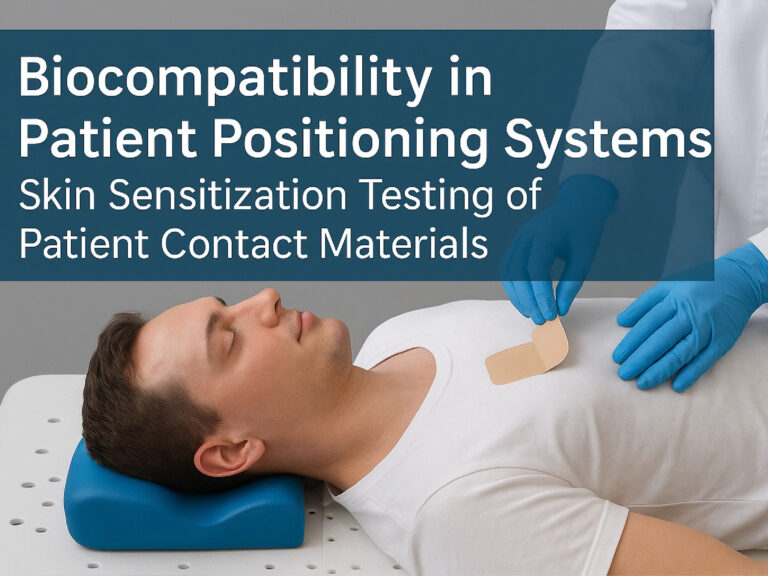
The Critical Role of Skin Sensitization Testing in Radiotherapy Equipment
In radiotherapy, patient positioning and immobilization systems play a crucial role in treatment accuracy. These devices—couches, positioning boards, baseplates, headrests—come in direct contact with a patient’s skin. While their primary function is to stabilize and align the patient for precise beam delivery, it’s equally vital that they are safe for skin contact
In radiotherapy, Positioning devices must remain in contact with the patient’s skin during treatment. To ensure their safe use, materials that constitute these devices must undergo biocompatibility evaluations, including skin sensitization testing.
Panacea Medical Technologies conducted an evaluation of its carbon fiber material, used in patient positioning boards that come in direct contact with patients, to confirm its non-sensitizing nature at a NABL-accredited test laboratory.
Testing facility: GLR Laboratories Private Limited
This summary outlines the findings of a Guinea Pig Maximization Test (GPMT) performed on a carbon fiber sheet coated with polyurethane, intended for use in surface-contact applications within < 24-hour durations.
Objective
To evaluate the skin sensitization potential of the carbon fiber sheet extract in guinea pigs using the GPMT method, in accordance with ISO 10993-10:2020(E).
Methodology Summary
- Test System: 30 male Dunkin-Hartley guinea pigs
- Groups:
- G1: Polar solvent control (n=5)
- G2: Polar extract (n=10)
- G3: Non-polar solvent control (n=5)
- G4: Non-polar extract (n=10)
- Extraction Conditions:
- Solvents: Physiological saline (polar) and sesame oil (non-polar)
- Extraction ratio: 3 cm²/mL
- Temperature: 50 °C for 72 hours
- Exposure Phases:
- Day 0: Intradermal injection
- Day 7: Topical induction
- Day 21: Challenge exposure
- Assessment Periods: 24 h and 48 h after challenge patch removal
- Scoring Method: Magnusson and Kligman scale
Results
- No signs of erythema or oedema were observed at the test or control sites in any group.
- Body weights increased across all animals.
- No morbidity or mortality occurred during the study period.
- The study met all validity criteria:
- A separate positive control (2,4-Dinitrochlorobenzene) demonstrated expected reactivity in prior batch testing.
- Solvent controls showed no response.
- No histopathological examination was required, as no visible skin reactions were observed.
Conclusion
Based on the data generated and in compliance with ISO 10993-10:2020(E), the tested carbon fiber sheet extract did not induce skin sensitization in the GPMT model. It is therefore classified as a non-sensitizer under these experimental conditions.
Relevance to Clinical Practice
These findings support the suitability of the tested material for non-invasive radiotherapy applications, where it is expected to contact the patient’s skin for up to 24 hours. The absence of sensitization potential contributes to ensuring patient comfort and minimizing treatment-related skin reactions during immobilization procedures.
“Safety is a baseline. Our biocompatible materials are tested, validated, and trusted in clinical environments.”


